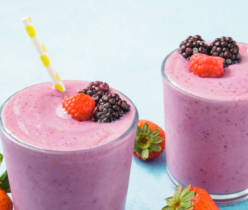By Doug Varrieur, Author, FAT TO SKINNY Fast and Easy series
“The Best Weight Loss Books Ever Written”
In a recent study featured in USA Today, prominent researchers at Emory University and the Atlanta-based Centers for Disease Control and Prevention examined the added sugar intake and blood fat levels in over 6,000 adults. This study encompassed various types of sugar, including refined table sugar, brown sugar, high-fructose corn syrup, “healthy” honey, molasses, brown rice syrup, agave syrup, and other sweeteners found in prepared and processed foods such as soft drinks, sweetened iced tea, candy, pastries, cookies, and canned fruits. Fructose sugars found in fresh fruit or juice, which also metabolize into blood sugar and associated blood fat, were not included in the study.
The Journal of the American Medical Association reported on the study’s findings: the average participant consumed a little over 21 teaspoons of added sugar per day, resulting in higher levels of triglycerides (blood fats) and lower levels of HDL (good) cholesterol. However, considering the American sugar intake, are these “high” levels of sugar, or have they become the normal levels of sugar consumption? According to the U.S. Department of Agriculture (USDA) data, sugar consumption in 1999 was 158 pounds per person, an increase from 113 pounds per person in 1983. Currently, this consumption equals around 50 teaspoons of sugar per day. Over the last 20 years, we have seen a 100 percent increase in obesity rates in children and adolescents in the U.S. as a result of this rising sugar consumption.
The industry groups representing big sugar and high-fructose corn syrup (HFCS) responded by insisting that their products are natural and don’t cause weight gain or health problems. This defense is reminiscent of big tobacco promoting its “natural” product or drug kingpins pushing natural opiates derived from opium poppies.
In response, the American Heart Association (AHA) issued a scientific statement linking high intake of added sugars to poor health conditions such as obesity, high blood pressure, and other risk factors for heart disease and stroke. The AHA recommends women consume no more than 100 sugar calories per day (or about 6½ teaspoons) from added sugars, and men no more than 150 calories (or about 9½ teaspoons). This includes all types of caloric sweeteners, not just table sugar.
I can’t help but wonder if big sugar thinks we’re all totally clueless. Personally, I find it irritating to be treated as if I don’t know any better; this feels like a repeat of the big tobacco debacle. I battled with obesity and type 2 diabetes for many years, and it was only when I removed sugar from my diet that I lost over 100 pounds and reversed my diabetes. But not before sugar had wreaked havoc on my arteries, with years of high triglycerides in the 400+ range (a direct result of high blood sugar) leading to a 95% blockage in a main artery and a life-threatening heart attack.
Many physicians have known for years that high intake of added sugars is linked to many poor health conditions, including obesity, high blood pressure, and other risk factors for heart disease and stroke. Yet, sugar is not the only problem. There’s also the issue of sugars that we don’t see.
Here’s a quick guide to help identify where much of the hidden sugar in your diet might be coming from, as high triglycerides (blood fat) are a direct result of overconsumption of these sugars:
- Refined sugar and HFCS: Found in processed foods, soda, candy, cookies, cake, ice cream, and any other products using it as an added ingredient. These simple carbohydrates are burned for fuel by your body before anything else, immediately turning into glucose (blood sugar).
- Sugar from fruits (fructose): Also a simple carbohydrate, fructose metabolizes slower because the liver converts it to glycogen before glucose.
- Sugar from vegetables and grains: These complex carbohydrates burn more slowly. In excess, they will also cause sugar spikes and fat gain. This occurs more quickly with grains, which are turned into flour, then breads and pasta, which break back down into sugar in your body. Cereals, bread, pasta, and other flour products are favorites of overweight individuals.
To reverse the trend, it’s crucial to educate yourself and others about the deadly realities of this sweet poison. Replace high-sugar foods in your diet with low sugar alternatives, and watch your body burn off the excess stored sugar in the form of fat. You’ll not only lose weight, but your blood sugar will lower as well. The methods are easier to understand and apply than you may think, and the health benefits are truly amazing.
In the meantime, it’s business as usual for the “fat cats” of big sugar. They know we’re all addicted to their product and aren’t likely to change our habits. Watch out for new marketing campaigns designed to reinforce their message while our children continue to pay the ultimate price.
Doug Varrieur, Author, FAT TO SKINNY Fast and Easy series “The Best Weight Loss Books Ever Written” www.FATtoSKINNY.com




